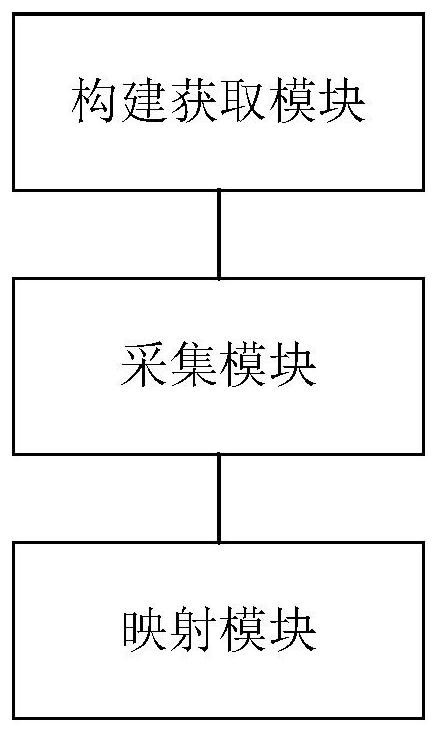Performance data mapping method and its network management system
A technology of data mapping and network management system, applied in the direction of digital transmission system, data exchange network, transmission system, etc., to achieve the effect of improving accuracy
- Summary
- Abstract
- Description
- Claims
- Application Information
AI Technical Summary
Problems solved by technology
Method used
Image
Examples
Embodiment 1
[0066] see figure 1 As shown, this embodiment provides a method for performance data mapping, which includes the following steps:
[0067] S1. Load the configured device performance data mapping rules and build a query engine. Devices include source devices and target devices. The source device is the original device for which the performance data is reported, and the target device is the device to which the performance data actually belongs; traverse the device types to obtain the source device and the type and line number of the target device, the query engine creates a mapper based on the type of the source device.
[0068] S2. Input the historical performance collected from various source devices into the query engine, and the query engine locates the corresponding mapper according to the type of each source device.
[0069] Historical performance refers to the performance index value representing the physical port or logical service of the device. There are many types, s...
Embodiment 2
[0074] As a better optional mode, the difference between this embodiment and embodiment 1 is:
[0075] Step S1 specifically includes:
[0076] S11. Load and parse an XML (Extensible Markup Language, Extensible Markup Language) rule configuration file, and initialize a query engine for finding and mapping a target device.
[0077] S12. Traversing all device types, extracting the type of source device, the line number of the source device and the mapping performance code, and extracting the type of the target device and the line number of the target device.
[0078] S13. The query engine creates a mapper according to the type of the source device.
[0079] Wherein, step S13 specifically includes:
[0080] S131. Initialize the mapper by using the extracted type of the source device, the line number of the source device, the mapping capability code, the type of the target device, and the line number of the target device.
[0081] S132. The mapper creates a hash table of the map...
Embodiment 3
[0086] As a better optional mode, the difference between this embodiment and embodiment 2 is:
[0087] Step S2 specifically includes:
[0088] S21. Input the collected performance data into the query engine;
[0089] S22. The query engine extracts the type of the source device in the performance data;
[0090] S23. Obtain the type of the source device;
[0091] S24. Search the corresponding mapper in the hash table of the query engine according to the type of the source device, and judge whether to inquire about the mapper corresponding to the type of the source device, if not, end the processing, if, if so, judge that mapping is required, The corresponding mapper is returned to the query engine.
[0092] The corresponding mapper is returned to the query engine and then used for later performance mapping.
PUM
 Login to View More
Login to View More Abstract
Description
Claims
Application Information
 Login to View More
Login to View More - R&D
- Intellectual Property
- Life Sciences
- Materials
- Tech Scout
- Unparalleled Data Quality
- Higher Quality Content
- 60% Fewer Hallucinations
Browse by: Latest US Patents, China's latest patents, Technical Efficacy Thesaurus, Application Domain, Technology Topic, Popular Technical Reports.
© 2025 PatSnap. All rights reserved.Legal|Privacy policy|Modern Slavery Act Transparency Statement|Sitemap|About US| Contact US: help@patsnap.com


